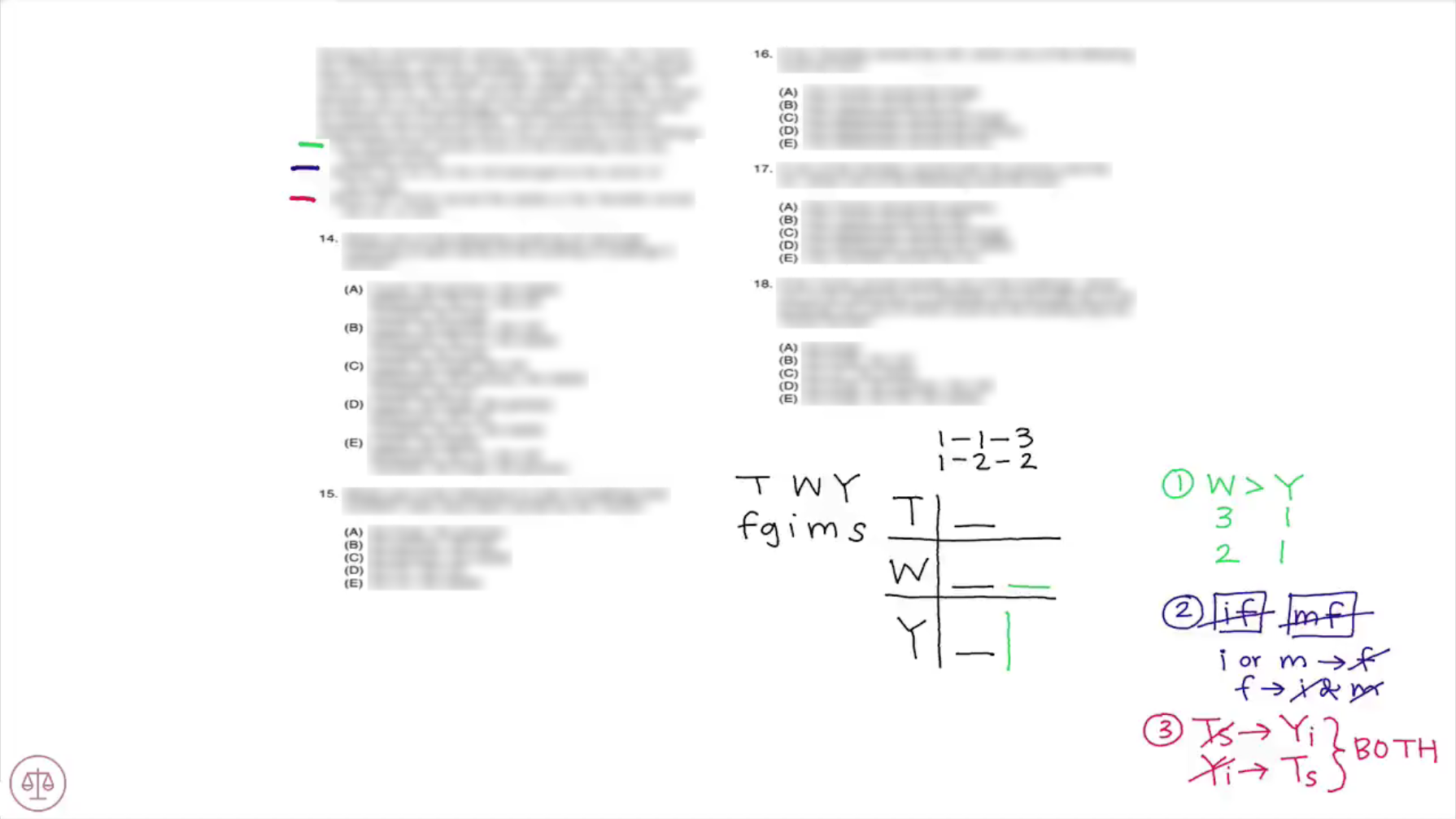For our LSAT prep today, we will go over another logic game from LSAT Test 73. Okay so Game 3 eases us out of the linear game model and into a straight Grouping Game. In this game we are tasked with grouping five different buildings into the ownership of three different families.
We are told that each family owns at least one building and each building was owned by exactly one family.
So, first things first: write out the numerical distribution. Remember, it’s so important to always write out the options for the possible numerical distributions. These distributions almost always play a part in the deductions of the game.
Here we know since we must have at least one of five buildings owned by each family, our distributions are: 1-1-3, and 1-2-2.
Next we hit the rules: Rule number one tells us that W owns more building than Y. Well, we can look at our handy-dandy distributions and this tells us that W will either have 3 buildings while Y owns 1, or W will own 2 buildings while Y owns 1. A big deduction we can make from this rule is that at the least, W will own 2 buildings (so we can add an extra slot for W in the setup) and Y will always only own one building (so we can cap Y at only one building).
Rule number two tells us that neither the inn nor the mill will be with the forge. So, if a family own the forge, they will not own the mill and they will not own the inn.
And rule number two is a classic “Either/Or” rule telling us that either the Trents owned the stable or the Yandells owned the inn, or both. So remember that we will always have at least one of those or we could have both.
So, that’s it for our setup, rules and deductions. Ultimately this is a very straightforward Grouping Game. Hopefully you do not find it to be too taxing. Once you review, make sure to go over our full video explanation below of the entire game setup:










